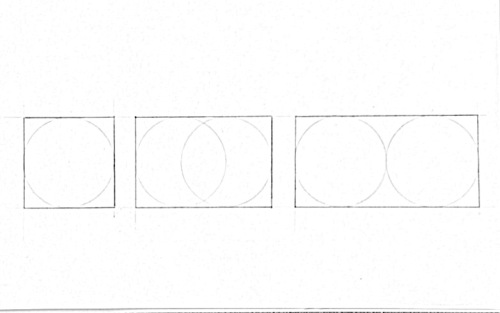
This simple design, uses many proportions commonly found in nature
Good designs are often beautiful but, design is so much more than that. A well designed piece of furniture is not only beautiful, it is also functional. It serves a purpose and serves it well. The best designs are unique and establish style. In this post, we will look at the elements of good design and examine them in detail.
Beauty
“You can’t please all of the readers all of the time; you can’t please even some of the readers all of the time, but you really ought to try to please at least some of the readers some of the time” – Stephen King, On Writing
I really love this quote, and I think it applies here. Beauty is a very personal thing. I can’t tell you what that means but, if you’re the only one who finds your designs beautiful, you aren’t succeeding as a designer.
Good designs tend to have elements commonly found in nature. The most revealing thing you can do, is examine a piece that you find beautiful. Break every element down and look at it under a microscope. Look at the proportions. What textures are used? How did the designer incorporate negative space? What about color? Can you find a relationship between any of these elements and those found in nature? What is it about each element that you find attractive?
If you want to design successfully, the examination process is critical. Do it every day. Take notes.
Form
Webster’s describes form as, “the shape of a thing or person”. The elements of form include, but are no limited to: shape, negative space, color, texture, size, and density. Good form seeks to find balance or display contrast. Your design will determine the shape, size, density, and negative space. Wood selection and finish will determine color and texture.
When inspecting the elements of your design, you must ask yourself if it achieves your goal. Do the proportions of the legs achieve balance with the thickness of the top? Does the contrast between wood species create the desired effect, or is it too busy? Try to recreate the elements you find attractive in other pieces.
Function
Furniture without function is useless. It doesn’t matter how aesthetically pleasing the item is. Function is the most important factor in determining the success of design. Seek to make your designs functional before making them beautiful
When building a dining table, make sure that it is the proper height. When designing a chair, make sure that it is sturdy and comfortable. Do your drawers slide freely? Will doors open properly? You get the idea. It’s not rocket science, but you must not overlook anything that may hinder the design’s purpose.
Don’t forget the details. Groves and seams in tabletops are notorious for hiding crumbs. Dark woods and stains show dust. Soft woods scratch easily. Be thorough.
Style
Style is the most personal element. It sets your designs apart from the others. It makes your designs unique. It’s also the element that takes the most time to develop.
Establishing style can be as simple as incorporating a unique detail into all of your pieces. Perhaps it’s a molding or drawer pull. It can be subtle, such as consistent use of negative space. It can be bold, like the sculpted chairs of Sam Maloof. Whatever it is, it’s likely something that will take some digging to get out. You won’t uncover it over night. Keep working. Keep discovering what it is that makes you unique. Look for inspiration everywhere.
What do you think makes a design successful?
Next up, we’ll look at the designers toolkit.
Fundamentals of Design: Series Index






















